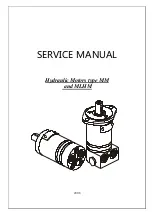
37
Fuel System
22 690 01 Rev. --
KohlerEngines.com
Choke Control Installation
In this engine series, choke cable connects to carburetor
choke lever and is secured to air cleaner adapter with a
cable clamp.
B
A
C
A
Cable Clamp
B
Air Intake Adapter
C
Choke Lever
1. Connect choke cable boden wire to carburetor choke
lever.
2. Position choke cable under cable clamp and secure
to air intake adapter.
3. Push/move choke control to off position in
application panel until it bottoms, then pull it back
approximately 1/16 in.
4. Push on choke cable, ahead of clamp on air cleaner
adapter, until choke lever stops. Do not force. Then
tighten cable clamp screw.
Starting an Engine Equipped with Separate Control
Cables
1. Place throttle control midway between slow and fast
positions. Place choke control into on position.
2. Start engine.
3. For a Cold Engine – Gradually return choke control
to off position after engine starts and warms up.
Engine/equipment may be operated during warm up
period, but it may be necessary to leave choke
partially on until engine warms up.
4. For a Warm Engine – Return choke to off position as
soon as engine starts.
Changing High Speed (RPM) on Engines with
Separate Controls (Increase or Decrease RPM)
Speed Control Bracket Details
A
A
A
Speed Control Bracket Mounting Screw
NOTE: If engine is equipped with a fuel pump, carefully
remove fuel lines from housing and remove
pump from bracket.
1. Check that governor spring and installation matches
intended high speed RPM operating range.
2. Start engine, move application throttle lever to full
throttle/fast, and loosen mounting screws of main
speed control bracket to allow repositioning.
3. To increase RPM: Move speed control bracket,
towards carburetor. To decrease RPM: Move speed
control bracket, away from carburetor. Check RPM
with a tachometer and tighten screws when correct
setting has been obtained.
4. To ensure that RPM has been obtained, move
throttle lever to low idle/slow then back to full throttle/
fast position and check RPM with a tachometer.
Setting Low Idle RPM
1. Move application control to slow position.
2. Using a tachometer, check RPM. Then, using a
screwdriver, turn low idle speed screw inward
(clockwise) to increase RPM, and outward
(counterclockwise) to lower RPM.
















































